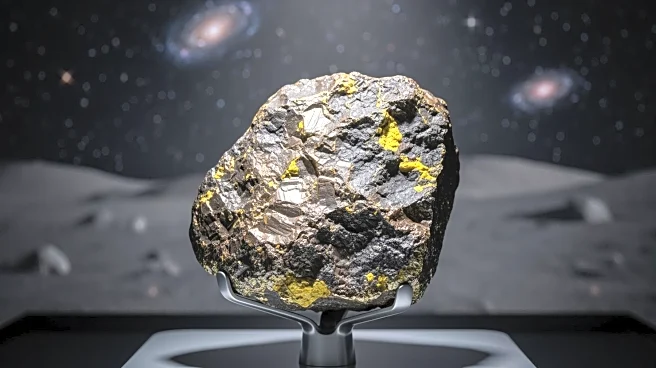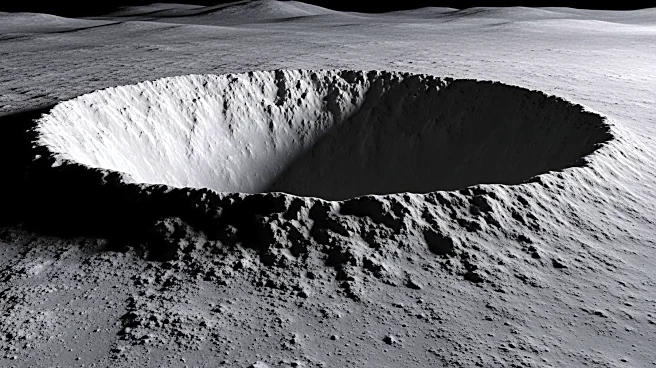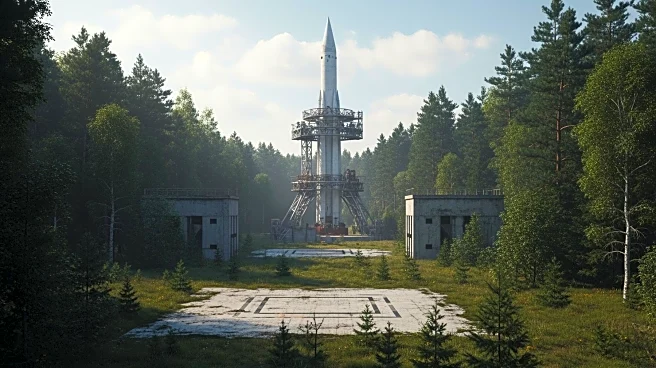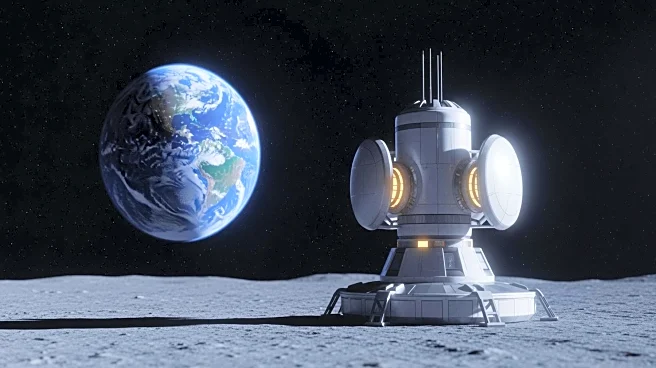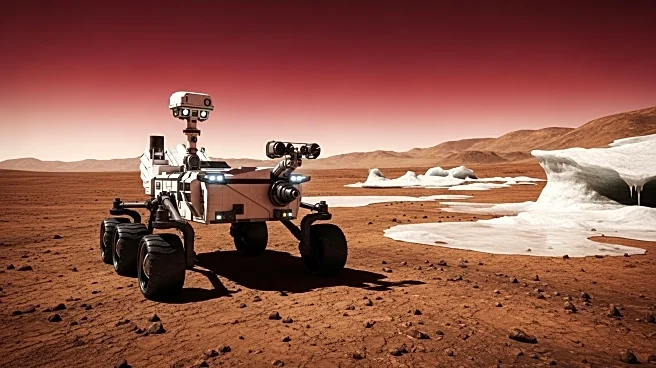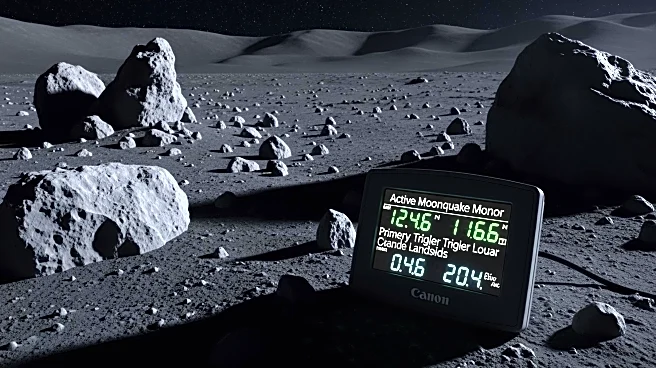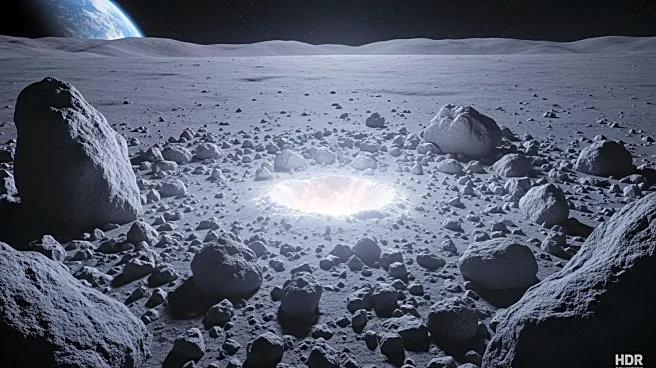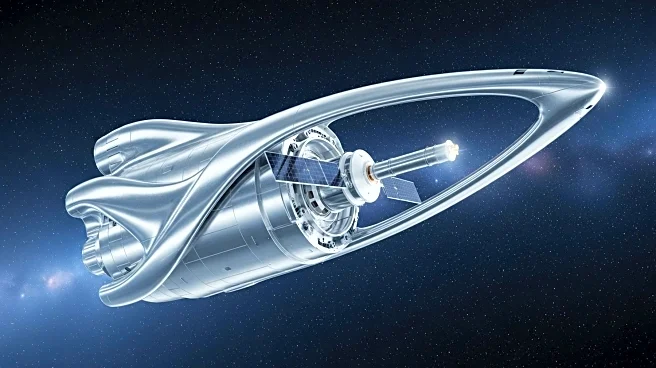What's Happening?
A team of scientists has conducted a detailed analysis of lunar samples collected during the Apollo 17 mission in 1972, revealing surprising sulfur isotope ratios. The samples, kept sealed in a helium
chamber since their return to Earth, were analyzed using a secondary ion mass spectrometer. The findings showed depleted levels of sulfur-33, a stable isotope, which differs from the sulfur isotope ratios typically found on Earth. This discovery challenges previous assumptions that the Moon and Earth share similar sulfur isotope ratios, as they do with oxygen isotopes. The research, led by James Dottin from Brown University, suggests that the volcanic material in the sample may have originated from the Moon's mantle, providing new insights into the Moon's geological history.
Why It's Important?
The unexpected sulfur isotope ratios in the Apollo 17 samples could have significant implications for understanding the Moon's formation and geological evolution. The findings suggest that the Moon may have undergone unique chemical processes early in its history, possibly involving a short-lived atmosphere that facilitated material exchange between the lunar surface and mantle. This challenges existing theories about the Moon's formation, which posit that it was created from debris following a collision between Earth and a Mars-sized object named Theia. The research opens new avenues for exploring the Moon's past and could lead to a reevaluation of the processes that shaped its development.
What's Next?
Researchers plan to conduct further examinations to determine the accuracy of the speculations regarding the Moon's sulfur isotope ratios. These studies may involve more advanced analytical techniques and comparisons with other lunar samples. The goal is to ascertain whether the anomalous sulfur is a remnant from the Moon's formation or a result of early atmospheric interactions. The findings could influence future lunar exploration missions and the scientific community's understanding of planetary formation processes.
Beyond the Headlines
The discovery of unique sulfur isotope ratios in the Apollo 17 samples highlights the importance of preserving and analyzing historical lunar samples with modern technology. It underscores the potential for uncovering new scientific insights from past missions, which can inform future space exploration strategies. The research also raises questions about the Moon's geological processes and their differences from Earth's, offering a broader perspective on planetary science.
